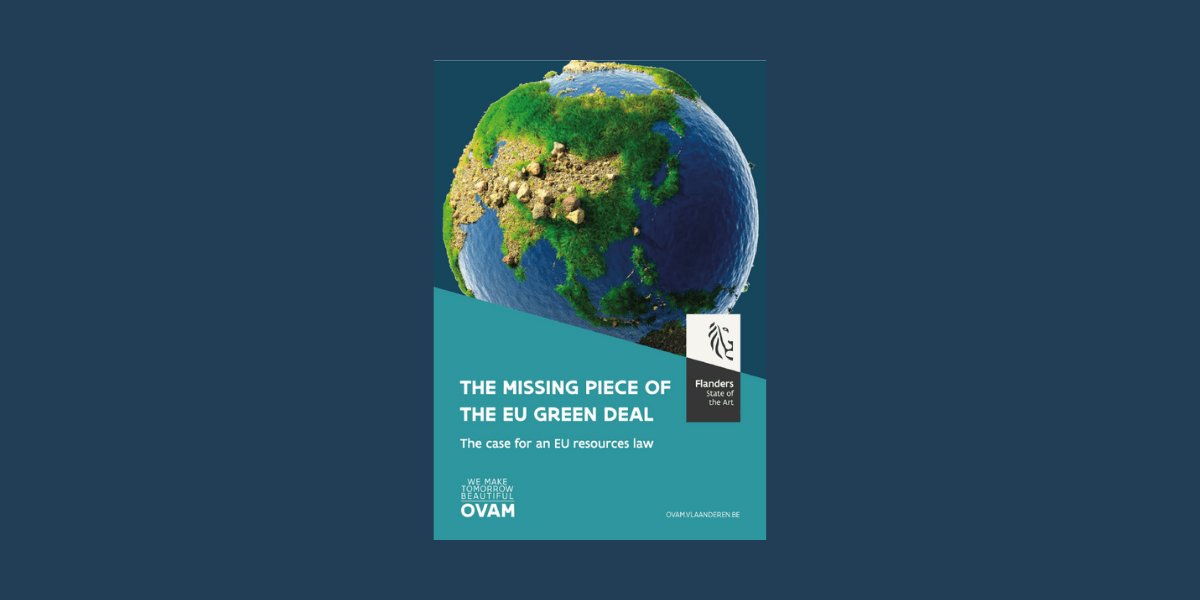AUTHORS: Emma Watkins, Colette van der Ven (TULIP Consulting), Arianna Bondi (TULIP Consulting)
This new report suggests a new EU Material Resources Law, to tackle the excessive use and consumption of material resources and support the EU’s Green Deal, climate change and circular economy objectives.
A recently published report for OVAM, the Flemish Public Waste Agency, makes the case for an overarching Material Resources Law to be introduced at EU level.
The report “The missing piece of the EU Green Deal – The case for an EU resources law”, drafted by TULIP Consulting and IEEP, suggests that the EU’s excessive extraction, production, manufacturing and consumption of material resources needs to be explicitly addressed. EU consumption is currently around double the estimated sustainable level, and tackling this is necessary to support successful implementation of the EU’s Green Deal, climate change targets and circular economy goals.
The report argues that linking a dematerialisation objective to existing decarbonisation efforts will make for more coherent policy approaches. Climate and energy modelling confirm that absolute reductions in energy and natural resource use can significantly lower greenhouse gas (GHG) emissions.
In addition, connecting the decarbonisation and dematerialisation agendas can help to avoid unintended negative consequences of the green transition, such as the potential significant increases in material demand to support clean energy technologies. Finally, reducing material resource consumption can also contribute to EU resilience and strategic autonomy, by combatting reliance on imports for Critical Raw Materials (CRMs).
The report suggests the development of an EU Material Resources Law, in the form of a regulation similar in nature to the EU Climate Law. Elements proposed include:
- A legally binding headline target to reduce material resource consumption (including biomass, fossil fuels, minerals and metals)
- Material- and/or sector-specific targets (e.g. for critical materials and high material-use sectors)
- Indicators (domestic material consumption and material footprint) to measure progress
- Establishment of an independent scientific advisory body focused on material resources
- A requirement for Member States to develop national plans on how they intend to achieve the material resource consumption reduction targets
- An implementation mechanism, potentially including a regulation on effort-sharing between Member States (similar to the one associated with the EU Climate Law), sector-specific action plans, and regulations on taxation
The report also discusses how a new EU Material Resources Law could fit with existing EU legislation, and potential international level implications.
The report’s publication coincides with the Belgian EU Presidency’s intention to foster dialogue about the circular economy transition, enhancing sustainable resource management and reducing the material footprint of European consumption and production.
Download the report. For more information, contact Emma Watkins at ewatkins@ieep.eu.

